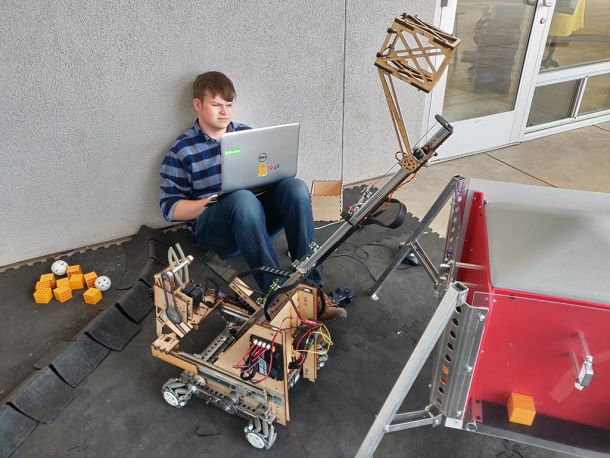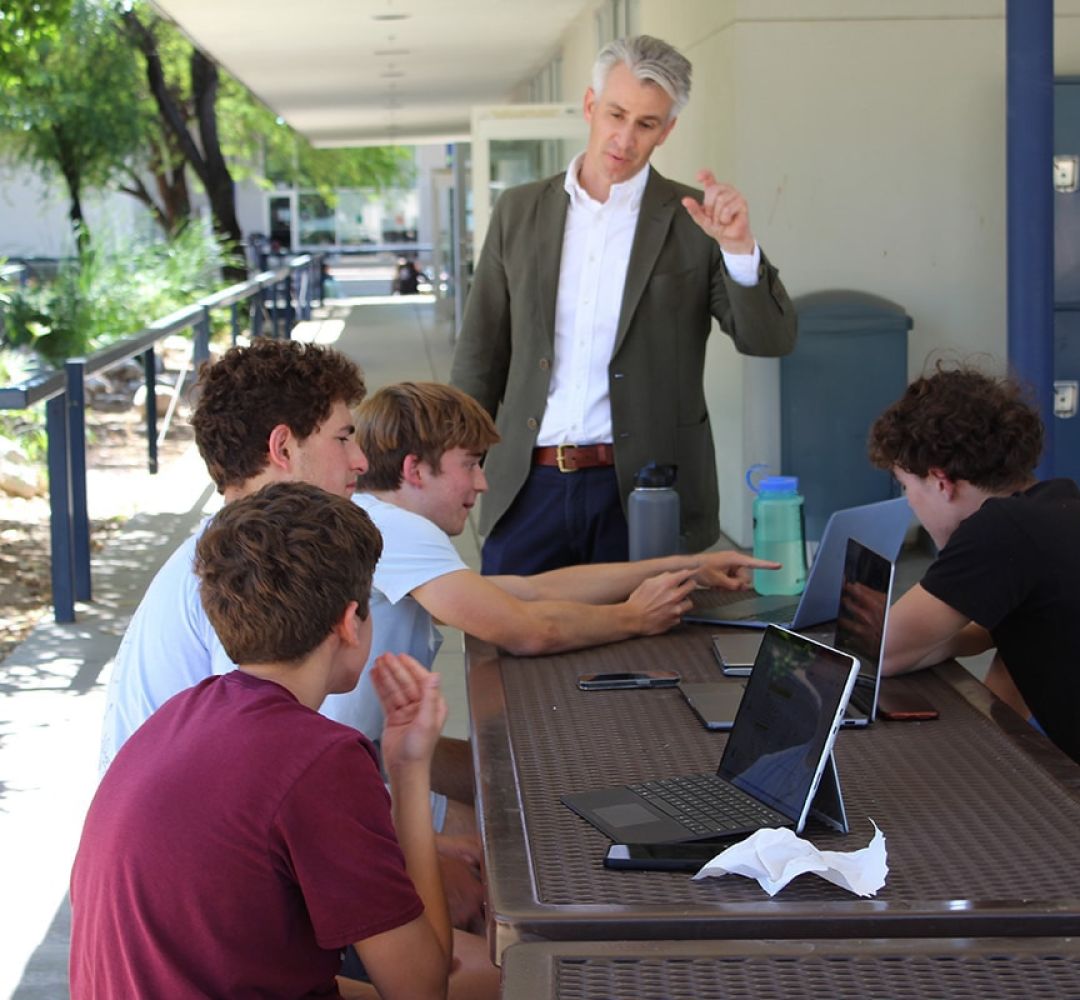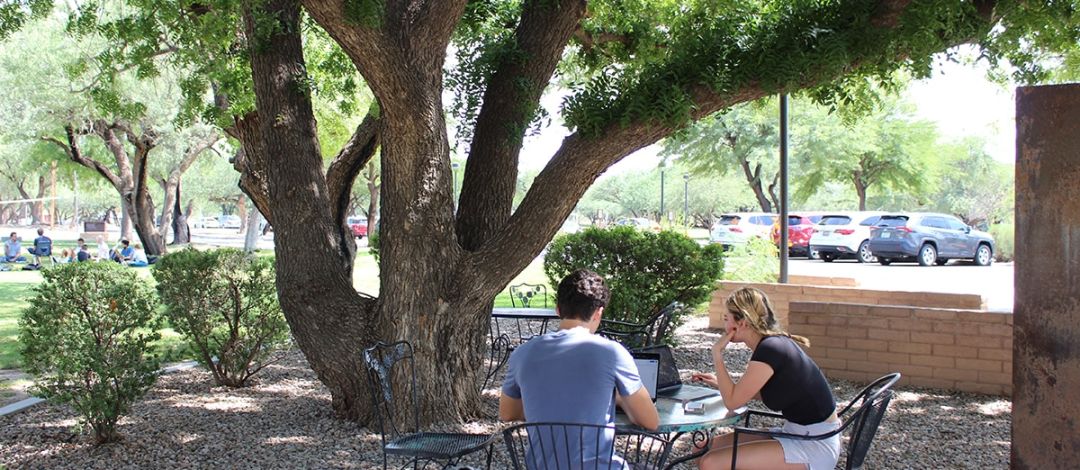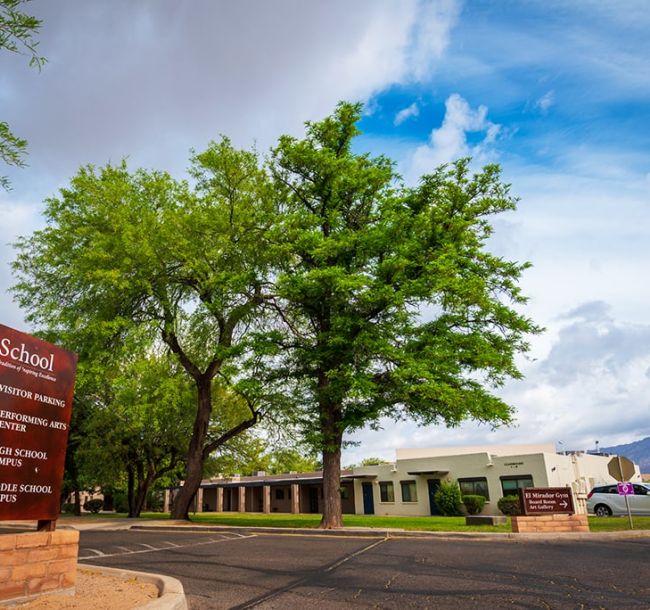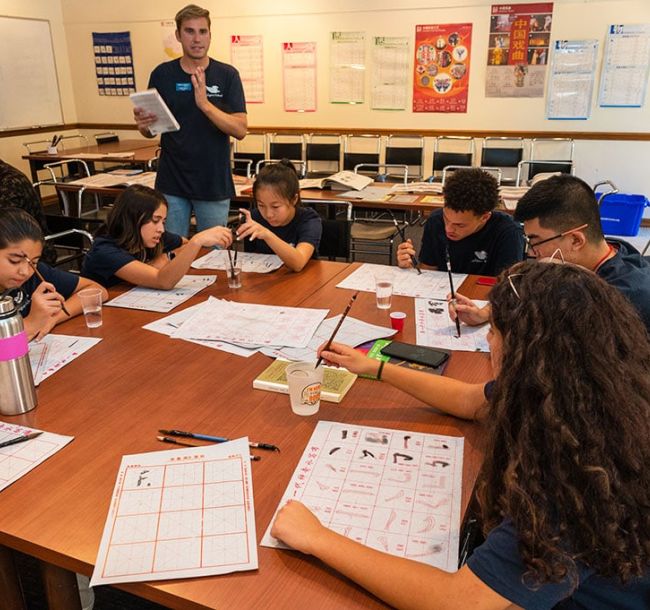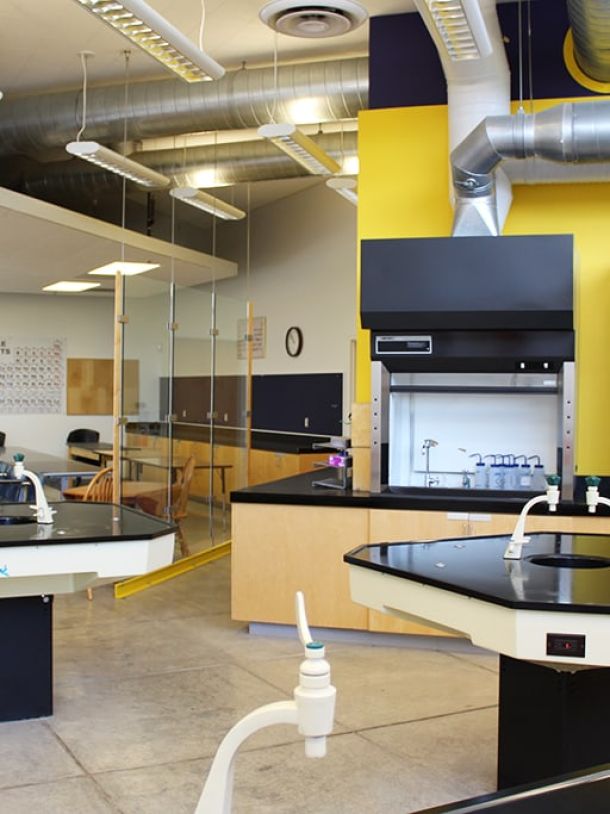
Our state-of-the art science facilities include full biology, chemistry, physics and virtual reality laboratories.
Physics Labs
In addition to catapults, temperature data loggers, research grade thermometers and other standard physics classroom equipment, the science department has at its disposal a thermal camera that is used in physics labs to visualize heat transport and illustrate energy partitioning driven by the characteristics of an object's surface. The camera is also used in engineering classes to help students improve and optimize the design of solar ovens and other projects.
Students routinely use statistical software typically used in research and development applications in their physics, statistics and Engineering courses. This allows students to process very large data sets with hundreds or thousands of observations, allows for mathematical modeling of physical processes and helps students learn about the effectiveness of data visualization in science communications. Being able to be comfortable with powerful data analysis and processing software gives students a competitive advantage in college-level courses by allowing them to familiarize themselves with complex statistical software over the entire academic year.
Virtual Reality
Virtual Reality is about connecting people to places and experiences that they would not otherwise enjoy. The use of Virtual Reality in education is evolving rapidly, allowing students to tour new places, to recreate challenges, and to dissect the world in a safe environment. Among some recent ways students have used our Virtual Reality system are to build 3d models and experience them in virtual reality, use educational software to explore the workings of the human body, and to play games that force players to use reasoning and deduction skills from a real life perspective. Virtual Reality worlds are rich with opportunities that open our students to new perspectives and new roles through challenging and entertaining simulations.
Students routinely use statistical software typically used in research and development applications in their physics, statistics and Engineering courses. This allows students to process very large data sets with hundreds or thousands of observations, allows for mathematical modeling of physical processes and helps students learn about the effectiveness of data visualization in science communications. Being able to be comfortable with powerful data analysis and processing software gives students a competitive advantage in college-level courses by allowing them to familiarize themselves with complex statistical software over the entire academic year.
Virtual Reality
Virtual Reality is about connecting people to places and experiences that they would not otherwise enjoy. The use of Virtual Reality in education is evolving rapidly, allowing students to tour new places, to recreate challenges, and to dissect the world in a safe environment. Among some recent ways students have used our Virtual Reality system are to build 3d models and experience them in virtual reality, use educational software to explore the workings of the human body, and to play games that force players to use reasoning and deduction skills from a real life perspective. Virtual Reality worlds are rich with opportunities that open our students to new perspectives and new roles through challenging and entertaining simulations.
Biology and Chemistry
Biology and Chemistry
The biology and chemistry facilities at the Gregory School are spacious and well-equipped. Both laboratories are divided into two large areas: one for lectures and one for laboratory tasks. The rooms are equipped with fume extraction hoods, gas “faucets,” and sinks. The perimeter of each room is graced with over 400 linear feet of countertop, generously supplied with ample electrical outlets.
Both laboratories are bathed in natural light and are beautiful, functional spaces in which science students and their teachers can flourish.
The biology laboratory also features:
An attached greenhouse used by students in several Upper and MIddle School classes
Appropriate glassware
Thermometers
A portable plant “grow table”
Numerous compound light and binocular dissecting microscopes with slides, cover slips, stains, and prepared slides
The chemistry laboratory also features:
A spectrophotometer: measures the intensity of a light beam of a specific wavelength before and after it passes through a sample and compares these two intensities. The spectrophotometer is used for all chemistry classes, and is used more extensively for AP chemistry in kinetics experiments, such as determining rate and order for chemical reactions, Beer’s law labs, and determining glucose levels.
A temperature probe: measures the temperature of any liquid. We use the temperature probe as a substitute for thermometers since it’s easier to read and more durable.
A pH probe: measures the pH of any liquid and indicates whether it’s an acid, base, or neutral solution. We use the pH probe for acid/base titration labs.
A colorimeter probe: performs the same functions as a spectrophotometer but is significantly smaller in size.
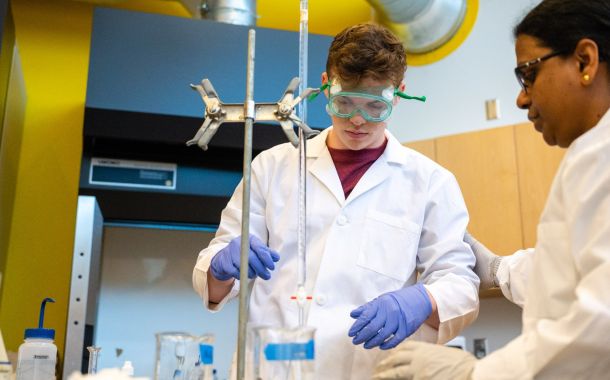
The rooms are equipped with fume extraction hoods, gas “faucets,” and sinks.
